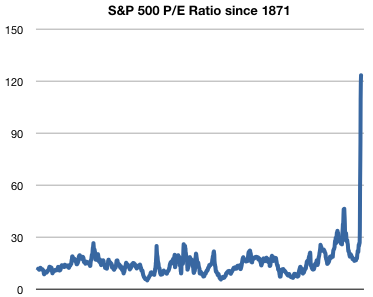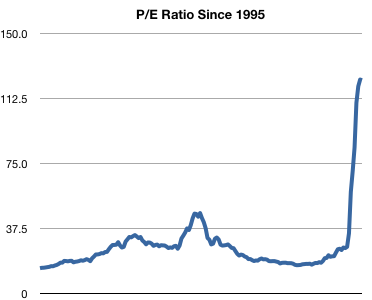(Update: this argument was improve in a later post here.)
This follows up on last week’s assertion that many private colleges are a bad investment, viewed from a purely financial perspective.
Obviously college has more than mere financial benefits. But those additional benefits are of interest mainly to families that are already somewhat prosperous and educated. If you agree that much of the value in affordable college education is to help people up the economic ladder, then you must also agree that such people are mainly interested in return on investment — it’s tautological.
In the previous post, I suggested that the cost of servicing college debts was often greater than the financial benefit of college. This post is more general: it argues that the net present value (NPV) of an investment in college, no matter how it is paid for, will often be less than zero. This is the mathematical definition of a bad investment.
Caveat: be suspicious of NPV arguments, as I’m about to present here. The NPV equation is inherently unstable. Its terminal value contains the term (1+g)/(r-g), where g is the growth rate and r is the discount rate, is obviously extremely sensitive to the choice of discount rate. It’s a tiny number in the denominator — little changes make a big difference. Tweak that knob a little bit, and you can prove almost anything. This little arithmetic detail is the precise reason that huge companies make foolish mergers — but that’s another story.
Studies supposedly show that college increases median income by about $19,000. But that’s pretax. The after-tax benefit is more like $12,500. This should really be reduced further to reflect alums who end up not working, but let’s ignore that for now.
We’ll choose a discount rate of 8% — actually quite low, only 3% over a reasonable long-run risk-free rate, on the presumption that one’s income is increased with high reliability by going to college. This yields a present value for a 40-year working life of about $150,000.
Thus the maximum tuition you should be willing to pay for a “median” college education should be $150,000, or $37,500 per year, assuming no tuition increases.
Uh oh. The College Board says the average student in 2005 took 5.3 years to complete private college at $30,367 per year, or a total of $152k. Conclusion: private college is a bad investment in many, probably even most, cases.
We’re being very generous here — the true situation is almost certainly worse. For example, the unemployment rate among new alums is now ~20%, so we should reduce the first-year median income by that amount. This cuts PV to $140,000. As another example, interest rates are highly likely to be unusually high over the next 20 years. If the discount rate is 12%, then the maximum logical college expense (tuition plus all expenses) is only $104,000.
Again, the point is that this suggests a low or negative return on investment for expensive second-tier private colleges, regardless of who pays, or how. Whether the government pays, or the school, or your parents, or you borrow tuition from Sallie Mae, the answer is the same: low or negative return on investment.
A few silver linings: personal choices can greatly affect outcome. The levers are the choice of school, choice of major, and number of years spent there. If you go to a private school known for good placement, then major in something marketable, and then place out of your freshman year with your good AP test scores, then you’re going to do fine.
For everyone else, it looks like the whole system needs a radical overhaul.
—

